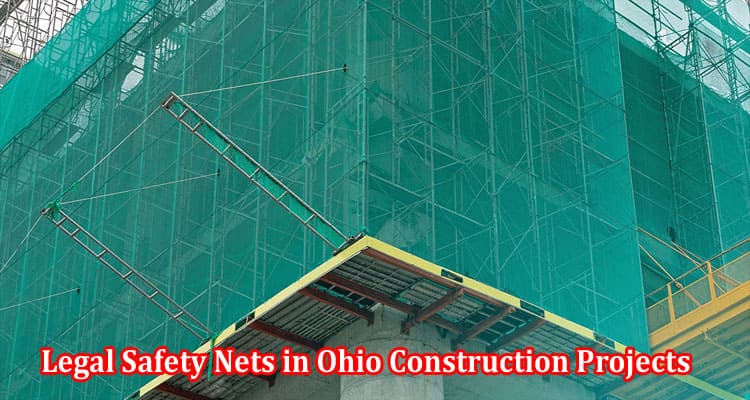Construction projects in Ohio come with various legal risks and challenges. It is crucial for all parties involved to understand and implement legal safety nets to protect their interests and ensure the smooth execution of the project. In this blog post, we will explore the concept of legal safety nets in the context of Ohio construction projects, discuss their relevance, and provide insights into their implementation and impact.
Understanding Legal Safety Nets in Construction
Legal safety nets are protective measures in the form of legal agreements and provisions that help mitigate risks and ensure fair treatment of parties in construction projects. In Ohio, some key legal safety nets include:
- Contracts – Written contracts establish the rights, obligations, and expectations of each party involved in the construction project. A well-drafted contract defines project scope, timelines, payment terms, dispute resolution mechanisms, and other important details.
- Insurance – Contractors and subcontractors typically need to provide adequate insurance coverage to protect against potential liabilities and risks associated with the construction project. Common types of insurance include general liability insurance, worker’s compensation insurance, and builder’s risk insurance.
- Bonds – Bonds serve as a financial guarantee to ensure that parties meet their obligations. In Ohio, different types of bonds may be required, such as performance bonds, bid bonds, and payment bonds.
- Indemnity Agreements – These agreements establish the division of responsibilities and liabilities between parties in the event of a claim or loss. Indemnity agreements can protect parties against claims or losses arising from the actions or negligence of other parties involved in the project.
Proper implementation of these legal safety nets creates a framework of protection for all parties involved in a construction project.
The Impact of Legal Safety Nets on Ohio Construction Projects
Having robust legal safety nets in place significantly minimizes risks and ensures fair treatment throughout the construction project. Some ways in which legal safety nets impact Ohio construction projects include:
- Protection of Parties’ Interests – Legal safety nets safeguard the rights and interests of all parties involved, including owners, contractors, subcontractors, and suppliers. Clear contracts, insurance coverage, bonds, and indemnity agreements provide financial protection, risk sharing, and certainty.
- Mitigation of Potential Disputes – Comprehensive contracts with well-defined terms and dispute resolution mechanisms help prevent conflicts and disputes from arising during the project. Clear specifications for insurance and indemnity agreements also assist in addressing and resolving any claims or losses.
- Risk Allocation – Legal safety nets aid in proper risk allocation by ensuring that each party bears responsibility in accordance with their contractual obligations. This ensures fairness and reduces the potential for bearing excessive financial or legal burdens.
- Regulatory Compliance – Implementation of legal safety nets helps ensure compliance with Ohio construction laws and regulations. This enhances overall project compliance, minimizes legal risks, and protects the reputation of all parties involved.
To demonstrate the real-world impact of legal safety nets in Ohio construction projects, let’s consider a scenario:
Example Scenario: A subcontractor accidentally damages a neighboring property while carrying out construction work. Without proper insurance coverage or indemnity agreements in place, the subcontractor could face significant liabilities which may hinder completion of the project and potentially lead to costly legal disputes. However, if the subcontractor has appropriate insurance coverage and indemnification agreement with the contractor, they can confidently address the issue and mitigate financial losses.
Implementing Legal Safety Nets in Your Construction Projects
Proper implementation of legal safety nets requires attention to detail and precision. To effectively implement these safety nets in Ohio construction projects:
- Seek Legal Advice – Consult with experienced construction attorneys to craft comprehensive contracts, establish appropriate insurance coverage, build suitable bond agreements, and draft indemnity provisions that comply with Ohio laws and protect all parties’ interests.
- Maintain Documentation – Keep records of all legal documents, including contracts, insurance certificates, bonds, and indemnity agreements. Regularly update these documents to reflect any changes in project scope or circumstances.
- Stay Informed – Familiarize yourself with Ohio’s construction laws and regulations, ensuring compliance throughout the project. Regularly monitor changes in legal requirements and adapt your legal safety nets accordingly.
For a valuable resource to facilitate appropriate legal documentation, contractors across Ohio can utilize an Ohio lien waiver form to ensure compliance with lien release requirements.
Conclusion
Legal safety nets are crucial in Ohio construction projects, protecting the rights and interests of all parties involved. By understanding and properly implementing contracts, insurance coverage, bonds, and indemnity agreements, construction projects can proceed smoothly, risks can be minimized, and fair treatment can be ensured. Engaging legal professionals, maintaining documentation, and staying informed of relevant laws are key to successfully navigating legal safety nets in Ohio construction projects. By proactively implementing appropriate safety nets, contractors can maintain the integrity of their projects, provide security for all parties involved, and effectively manage legal risks.




